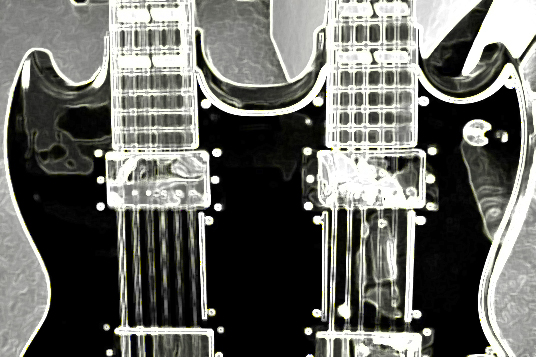With the challenge from my wife, and after my attempt at rebuttal, I committed to the project of re-learning and recording Stairway to Heaven. In a previous article I spoke of my history as a young guitar player with Stairway, and it was entirely true that I had not learned or played Stairway in any real capacity since I was about 14 or 15 years old. Sure I had whipped off impromptu performances for friends at parties and gatherings over the years; it’s virtually impossible to escape those requests; but never any serious performance. And after my injuries that forced my withdrawal from the University Classical Guitar Program in my early 20’s, I had done very little playing, or just sporadic bits of playing, so most of my abilities (and nearly all of my repertoire) were lost in time.
My hands were in rough shape – both of them, but most specifically my fretting hand. I had my right shoulder rebuilt after the accident and my picking hand didn’t seem to be as big a bother, but my fretting hand was the worst it had ever been. It was weak, and I had little to no feeling in the fingers, and it ached and throbbed with such intensity that it kept me awake at night. I could feel the tendons and muscles atrophy in real time and I spent considerable effort just working each finger loose by stretching them out multiple times a day. I had started playing guitar again about two years prior when I first discovered home recording as a way to make music without the need to be performance capable, but I had to go with the flow so to speak with respect to my injuries and had not really played for six months. As I started listening to the song and trying to play along with it, it became very clear that the mountain that I needed to climb was going to be really high. I couldn’t even fret the opening figure of the introduction. Baring across the first 4 strings at the 5th fret cleanly was painful and at the same time exhausting (which is a weird thing to say when you can’t feel anything in your hand) but that’s how it was. That realization almost stopped me right there.
It was through despair that I pushed onward. At this point I figured the project was going to be about me showing my wife what I couldn’t do it; that I’d take a hard run at it and crash face first into the wall and she’d understand. So everyday, while sitting in our living room watching TV with my wife, I listened to the recording on headphones and attempted to play along. It was a very long slow process, but it did yield progress. Within about a month I sounded like an 11 year old hacking out Stairway at guitar center.
Simultaneously I started auditing the original recording for the arrangement and gathering all the resources I could find with respect to transcriptions and scores for the original performance. Stairway is a deceptively simple song to play, yet full of nuances and dynamics that confound even seasoned players. It is played incorrectly more than it is played correctly and one trip to YouTube will prove that.
But if you listen very hard the truth will come to you at last
As elusive as Stairway is to learn correctly, everything is all there in the recording for you to hear. The mix is relatively clear and the instruments are panned selectively left, right, and center making it easier to follow specific parts and instruments through the mix. It just takes time to listen to and visualize what’s being played. So that’s what I did. Using visualization therapy popular in sports medicine and sports training programs I’d sit back with my eyes closed and play the song over and over on repeat on my iPhone while visualizing every single hand movement on the guitar as if I was playing it1. This proved to be enormously helpful because I was able to isolate various instruments in the soundstage and just follow them along as if I was watching Zeppelin play in front of me. I was able to identify parts and elements that I had overlooked or forgotten about in my youth. My governing thought was “maybe could I replace muscle memory with brain memory – or trick my muscles and neuro-pathways into thinking I was actually playing”? That’s what I was aiming for.
These visualization techniques worked for the 4 recorder parts on Stairway as well as John Paul Jones’ keyboard & bass parts. Drums were much trickier. As blessed as I was to always play with world class drummers in my youth, I had never paid much mind to the specifics or the mechanics of drumming so Bonham’s drum parts were much harder for me to isolate and visualize.
But the good news was that at about a month in I felt fairly confident that I ‘knew’ the song – at least I thought I did. Whether I could play it was another question entirely, and the question of drums still needed to be answered.
Featured Image: gibson sg doubleneck by David Beach cc 2.0
1https://www.psychologytoday.com/blog/flourish/200912/seeing-is-believing-the-power-visualization

